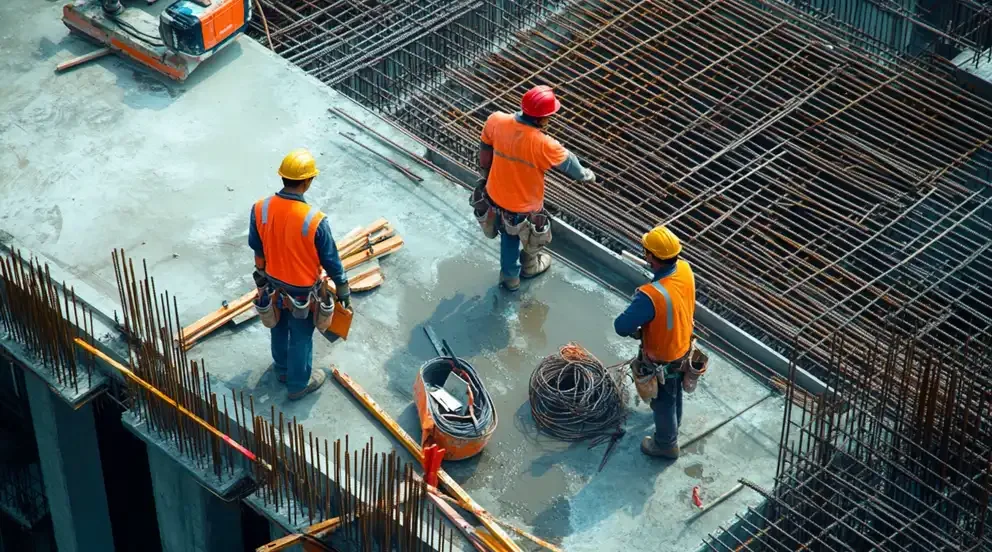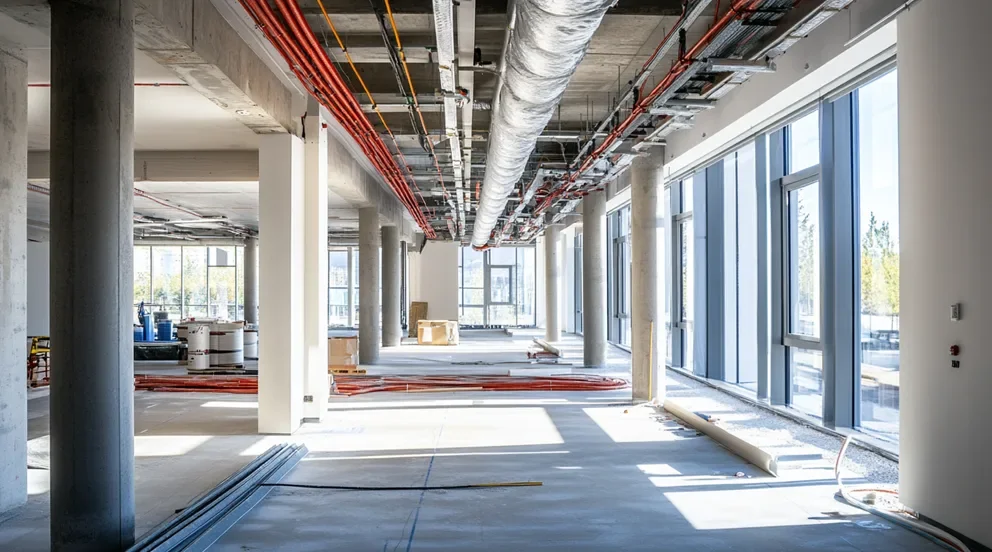HVAC (Heating, Ventilation, and Air Conditioning) install checklist template is a systematic guide that outlines the crucial steps and considerations involved when setting up an HVAC system. It is a comprehensive to-do list that technicians and installers rely on to ensure they cover all essential points, preventing missed steps and allowing for a smooth installation process. The template usually covers equipment specifics, safety measures, and regulatory compliance.
Such a checklist serves not only to streamline the installation operation but also acts as a documentation tool that confirms all procedures have been followed adequately. It can be used as a reference for quality assurance and any required troubleshooting post-installation. The template typically includes areas for date and signature verification, cementing accountability and providing evidence of thorough workmanship.
Customizable for residential or commercial environments, the HVAC install checklist template varies in complexity. For intricate systems, it could offer more detailed breakouts, while more straightforward applications may reflect just the basic essentials. Either way, it assists technicians in delivering a dependable system setup aimed at efficiency and optimal performance of the HVAC unit.
Content:
- Mapping out Efficient HVAC Practices: Creating an Install Checklist
- Using the Ultimate HVAC Install Checklist for Ensuring Quality & Reliability
- Optimizing the HVAC Installation Process through Checklists
- Techniques Retrospective: Curating Your HVAC Install Checklist
- Reset the Thermostat! Making Sense of Your HVAC Install Checklist
Embarking on an HVAC system installation requires meticulous planning and precise execution. Whether you’re a veteran technician or new to the world of heating, ventilation, and air conditioning, the need for a straightforward, easy-to-follow roadmap cannot be overstated. Enter the unsung hero of HVAC installations: the HVAC install checklist template, which ensures every vital step is addressed with the detail it merits.
An HVAC install checklist template isn’t merely paper or spreadsheet; it’s the backbone of a successful install. Navigating the labyrinth of tasks from statutory compliance to machine specifics and testing procedures, demands an organized approach that diminishes human error and optimizes install time efficiently. By embracing this disciplined assistant, contractors guarantee operations align with both manufacturer specifications and customer expectations.
Through the never-changing truncations of technology in HVAC systems, the perpetual relevance of the checklist template remains indisputable. The forthcoming landscape is teeming with stories of seamless installs but also dreadful accounts where one unchecked box spiraled into systemic failures. As we proceed, we unpack the vigor and pragmatism these templates instill within the installation workflow, promising clients peace of mind and conditioning systems bound for longevity and optimal climate control.
Mapping out Efficient HVAC Practices: Creating an Install Checklist
Creating an efficient HVAC install checklist represents a meticulous approach to ensuring optimal system performance. Starting with an assessment of the project site, technicians must verify the suitability of proposed unit locations. This includes considering airflow, potential obstructions, and ease of maintenance. These early evaluations set the stage for seamless installations, minimizing the risk of future system malfunctions or inefficiencies.
Next, it’s critical to select the right equipment for the specific environment. The checklist must include scrutinizing the heating and cooling capacity requirements according to the square footage and insulation levels. Technicians are also advised to evaluate the compatibility of new units with existing ductwork or the need for additional modifications. This foresight can dramatically reduce costly errors and compatibility issues.
Following equipment selection, an effective HVAC install checklist mandates a detailed review of all components. This encompasses checking the delivery of all necessary parts, from condensers to thermostats. It also involves verifying that the tools and supporting materials, such as fasteners and sealants, are at hand. This preparation prevents on-site delays and streamlines the installation process.
Procedural accuracy is a core focus of the HVAC checklist. Installers must adhere to a sequence that ensures each step — from ductwork inspection to thermostat calibration — is properly executed. The list should guide technicians through verification of electrical connections and safety tests. Such rigorous adherence to procedure enhances system reliability and helps avoid post-installation issues.
Finally, quality assurance should be integrated into the install checklist. Upon completion of the physical installation, a comprehensive system run test is paramount. Inspecting for correct function, listening for unusual noises, and sealing all connections are key factors in verifying a quality job. A well-crafted checklist ensures customer satisfaction and upholds the reputation of HVAC professionals.
Using the Ultimate HVAC Install Checklist for Ensuring Quality & Reliability
The ultimate HVAC install checklist serves as an indispensable tool for promoting consistency and delivering dependable systems. It starts with a thorough review of the design specifications. These must align perfectly with the operational requirements, ensuring the chosen system matches the client’s environmental needs. This step is vital for providing a foundation for the entire installation process.
Room-by-room inspection forms the checklist’s subsequent step. This is where technicians measure and document the specifics of each space, enabling accurate equipment sizing and placement. By anticipating challenges such as uneven room temperatures or airflow issues, the process upholds a commitment to personalized comfort. A detailed checklist elevates these quality standards.
Aspects of safety cannot be overemphasized in this checklist. It details procedural safeguards, including the deactivation of electrical circuits before installation begins. By methodically checking each safety box, technicians safeguard not only their well-being but also the integrity of the entire HVAC setup. Quality and reliability are intrinsically tied to these precautionary measures.
The checklist is structured to facilitate a comprehensive evaluation of the completed installation. It prompts technicians to confirm that all system components are securely fitted and functioning as intended. System pressure checks and refrigerant charge verifications are instrumental to this phase. Appropriate documentation of these assessments contributes to reliable and long-lasting HVAC performance.
Ensuring client understanding and satisfaction is the checklist’s conclusive goal. The final items should include a walkthrough with the clients to explain the system’s maintenance and operation. By answering questions and addressing concerns, technicians can foster trust and reinforce the quality of their work. A well-structured checklist, thus, becomes a testament to an HVAC company’s dedication to excellence.
Optimizing the HVAC Installation Process through Checklists
Optimizing HVAC installations through comprehensive checklists is a proven strategy for achieving stellar performance results. An initial checklist task involves verifying the client’s specific needs, which ensures the selected system is tailored to the property. Whether it’s climate control requirements or energy efficiency goals, these preliminary insights guide effective installations, reinforcing the importance of personalized solutions.
Attention to detail is paramount when inspecting for spatial constraints and environmental factors. The installation checklist should encourage technicians to meticulously examine areas for adequate ventilation and space for unit placement. In addition, By preemptively addressing potential problems, such as confined areas or excessive sunlight, the checklist converts challenges into successful setups, enhancing the overall HVAC system efficiency.
Integration with existing systems is a critical point on the checklist. Before proceeding, technicians must confirm that new units complement any previous installations. This includes double-checking electrical systems and ensuring existing ductwork is clean and intact. A streamlined checklist helps manage these complexities, providing a clear path to optimize the HVAC installation process.
A step often overlooked is the post-installation cleanup, which the checklist should clearly specify. Clean work sites reflect professionalism and attention to detail, qualities that clients appreciate. The removal of debris and the proper disposal of old equipment are crucial steps, underscoring an HVAC service provider’s commitment to thorough and thought-out processes.
Finalizing the process, the checklist should emphasize client education as an indispensable part of the installation. Alos, Demonstrating system operation and discussing maintenance schedules ensure client autonomy and system longevity.
Techniques Retrospective: Curating Your HVAC Install Checklist
Curating an HVAC installation checklist involves reflecting on past techniques and incorporating the best practices. A retrospective glance allows technicians to distill valuable lessons, leading to a checklist infused with experience. These insights guide workers, ensuring every installation reflects the highest performance standards. It begins with recording the peculiarities of each site, fostering installations that are both precise and custom-fit.
The checklist should serve as a technician’s roadmap, clearly outlining each operative stage. Sequence matters when installing HVAC units. For instance, ductwork must precede electrical hookups, and systematic compliance to this order is key. Incorporating lessons from previous jobs into the checklist refines the installation technique and bolsters confidence.
Revaluation of tools and equipment marks another critical stage represented in the checklist. In addition, Continuous improvements in technology demand regular updates of both the hardware and the checklist itself. A dynamic checklist, therefore, becomes a living document of best practices and innovation.
Client communication is integral to a top-tier checklist. Retrospective analysis often spotlights the need for better informing clients about what to expect. The checklist should prompt a mutual understanding of the project timeline and involve regular updates. Honed through experience, effective communication builds trust and enhances service quality.
Moreover, the checklist should culminate in an obligatory review of the completed work. Meticulous testing and inspection confirm that the installation meets all specified requirements. The checklist should leave room for feedback, inviting opportunities to learn and perfect future practices. Reflecting on techniques through a curated checklist guarantees continual improvement and customer satisfaction in the HVAC industry.
Reset the Thermostat! Making Sense of Your HVAC Install Checklist
Making sense of your HVAC install checklist’ is an essential exercise in clarity and accuracy. Also, Resetting the figurative thermostat begins with structuring the checklist around the system’s core requirements. Assessing the compatibility of the HVAC system with the property is a pivotal section of the checklist. The right fit between equipment and infrastructure ensures seamless function. Here, the checklist acts as a balancing tool, aligning practicality with environmental consciousness.
A standout feature of the checklist is its attention to precision in execution. In addition, Accurate measurement and secure fittings are benchmarks that define the checklist’s efficacy. It should also underscore the importance of clean installations—respecting the aesthetics of the environment whilst minimizing disruption. Precision ensures that the reset thermostat symbolizes an upgrade in ambiance as well as temperature control.
An essential part of the checklist involves a rigorous safety check, resetting standards of security and reliability. It should address the necessary precautions, from electrical safety to ensuring stable mounts. Ensuring the completed installation adheres to stringent safety regulations provides peace of mind. Through the checklist, technicians reset their focus on safety with each new project.
Completion of the checklist should feel akin to resetting the thermostat—signifying a fresh start and optimized conditions. The final walkthrough with clients, explaining system nuances, showcases the care taken during installation. Finally, When clients engage with a fully understood, well-maintained system, they experience the tangible benefits of a reset approach to HVAC systems, all thanks to a meticulously followed checklist.



